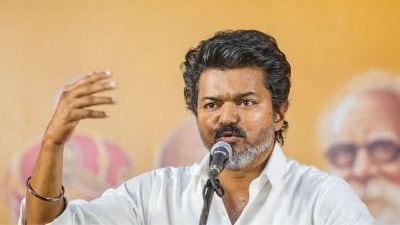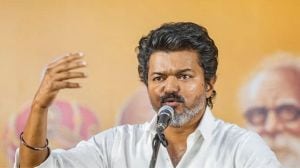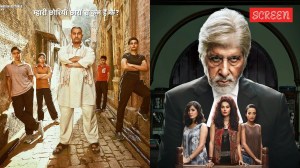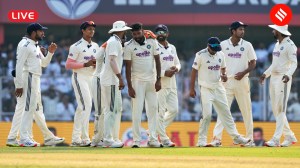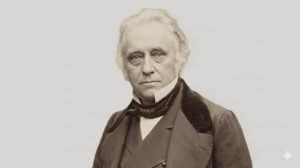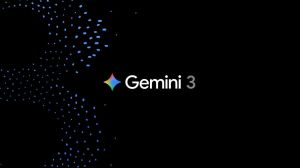Why a Yogi Adityanath poster at rally for King Gyanendra is causing a stir in Nepal
The UP CM is a known supporter of the Nepal monarchy, and signs are being read in his ‘presence’ at the biggest challenge thrown by the deposed Gyanendra to Oli govt.
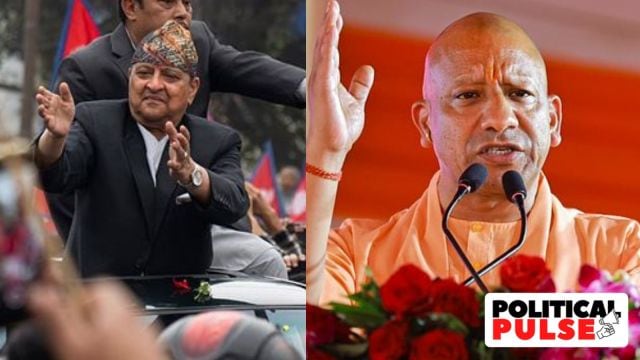 Oli’s supporters described Adityanath’s poster as evidence of “India hand” behind Gyanendra. (AP/ PTI/ X: @swatantrabjp)
Oli’s supporters described Adityanath’s poster as evidence of “India hand” behind Gyanendra. (AP/ PTI/ X: @swatantrabjp)AMONG the sea of supporters welcoming former Nepal king Gyanendra Shah to Kathmandu on Sunday – days after he had made his first direct appeal to the people since his ouster in 2008, seeking “support if they wanted to secure the nation’s future” – one face stood out. That of Uttar Pradesh Chief Minister Yogi Adityanath.
In Nepal’s volatile politics, an Adityanath poster was, unsurprisingly, a lightning rod. The BJP leader is a known supporter of Nepal’s deposed monarchy, and Gyanendra’s Kathmandu rally is being seen as his biggest challenge yet to the increasingly unpopular K P Sharma Oli government, battered by allegations of corruption.
Oli’s supporters described Adityanath’s poster as evidence of “India hand” behind Gyanendra, raising questions over the credibility of Sunday’s rally. The pro-Gyanendra parties shot back alleging that Adityanath’s posters had been “planted”, and calling it a conspiracy by the Oli government. As per the rally’s organisers, the use of Adityanath’s image neither had official sanction nor did they know about it, with the only instruction to participants being to use the national flag and Gyanendra’s portrait.
“We are not so weak as needing to use a foreigner’s photo in our procession,” said Dipak Gyawali, a former minister and pro-monarchist. What about Communists displaying portraits of Marx, Lenin, Mao etc at party offices, he added.
The ties between Nepal’s royal family and the Gorakhnath mutt of Gorakhpur, of which Adityanath is currently the head, run deep and go back ages. Rajendra Lingden, the president of the Rastriya Prajatantra Party (RPP), which was the main organiser of the Gyanendra rally, pointed to this, saying: “We don’t know about it (the Adityanath poster). But what we know and respect is that King Gyanendra has a deep connection of faith and respect with the Gorakhnath mutt, since the Shah dynasty is believed to have been blessed by Guru Gorakhnath.”
Gorakhnath remains the presiding deity of the Shah dynasty and was also one of Nepal while the country was a monarchy. Gorakhnath mutt heads have long visited mutts and shrines in Nepal.
The UPA government in India (2004-2014) was instrumental in bringing leaders of eight political parties in Nepal, including the Maoists (then spearheading an insurgency), to sign a deal which led to the suspension and then fall of Nepal’s monarchy. It paved the way for the Maoists to gain power in what was till then celebrated as “the world’s only Hindu kingdom”.
Adityanath, then the Gorakhpur MP and already head of the Gorakhnath mutt, was a vocal opponent of this – a view he has since repeated several times.
Meanwhile, the distrust of India’s “meddling” in Nepal’s affairs has only increased as its politics goes through upheavals.
On Sunday, the supporters celebrating Gyanendra raised slogans such as “Narayanhiti khali gara, Hamra raja aaudai chhan (Vacate the Narayanhiti royal palace, we are bringing our king back)”. At recent rallies of the former king, in places such as Pokhara, Galeshwar Dham and Baglung Kalika, supporters have hailed him, saying: “Raja aau, Desh bachau (King must come, Save the country)”.
Gyanendra, who made the rounds of various shrines leading up to his Kathmandu rally, met Adityanath in Lucknow as well as Gorakhpur last month. An aide said that politics should not be read into Gyanendra’s meetings with Adityanath. “His Majesty knows and respects that holding a political office and presiding over a religious mutt are different things. Therefore, he visited Gorakhpur before he gave the call for national reconciliation,” the aide said.
Adityanath was last in Nepal in December 2023 to participate in the annual festival held at Janakpur to mark ‘Ram-Janaki (Sita)’ wedding.
Incidentally, PM Oli, dressed in saffron, was present at the event.






- 01
- 02
- 03
- 04
- 05


